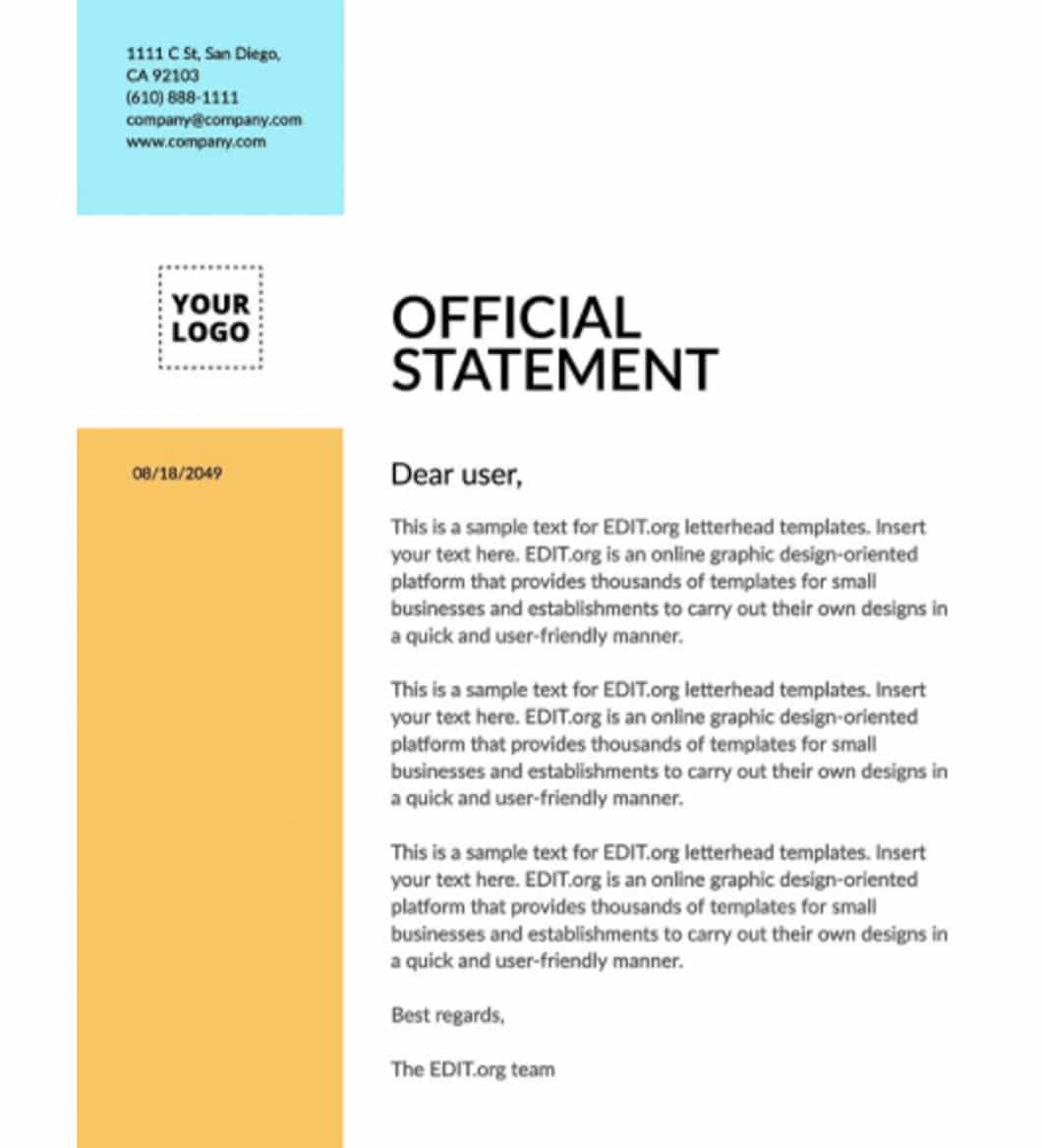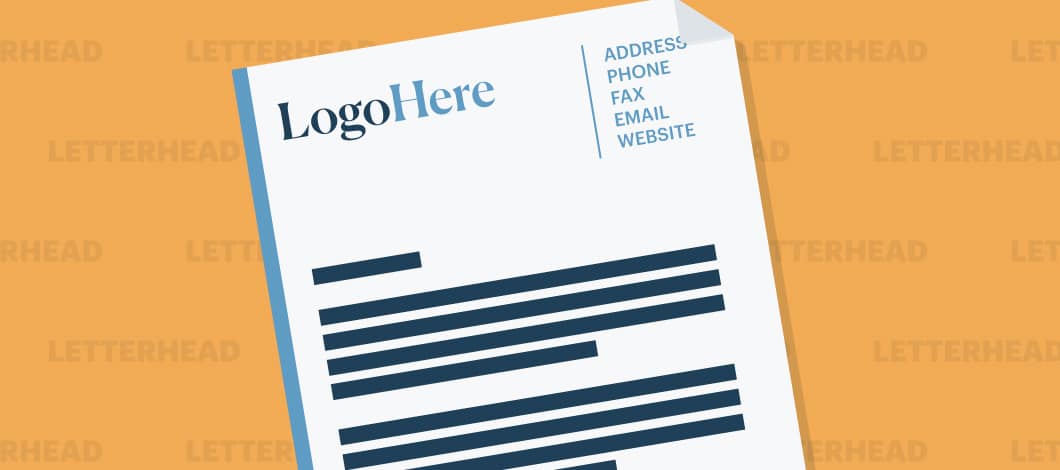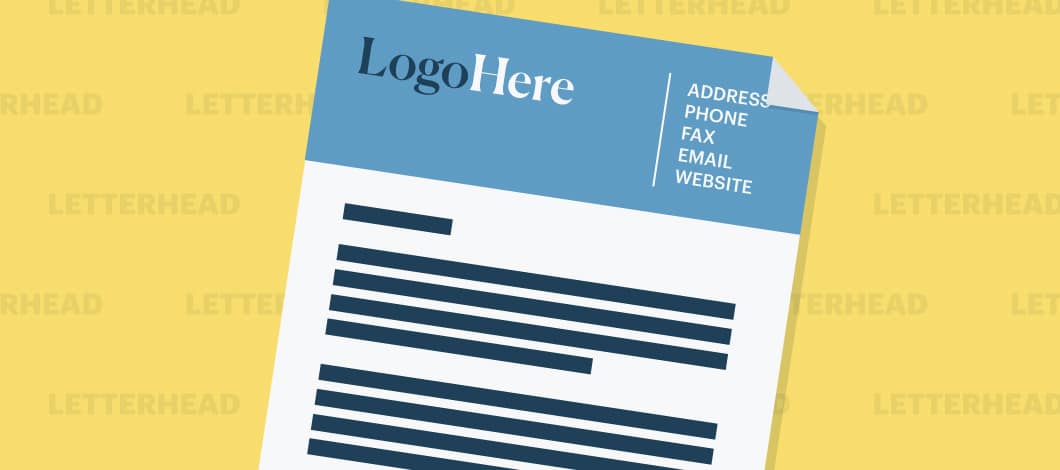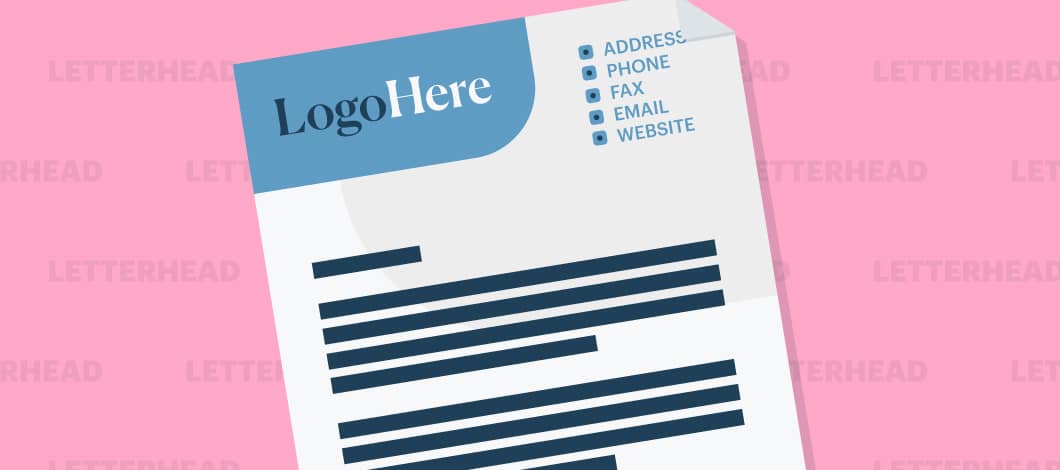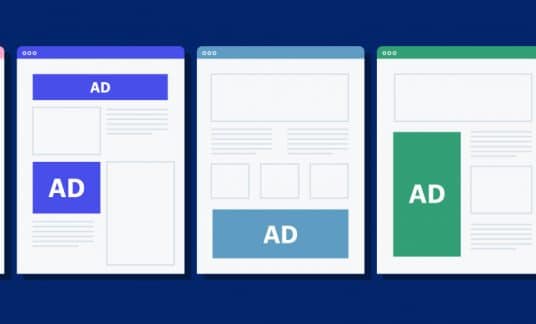A business letterhead is a document header that uses text or images to identify your company’s name and brand on official correspondence and internal documents (e.g., memos).
Your company name is a critical part of your brand — and with 31.7 million small businesses in the U.S., according to a 2020 report from the Small Business Administration’s Office of Advocacy — establishing a strong brand and standing apart from the competition is crucial in today’s commercial environment.
Here’s why you need a quality letterhead design — and how to develop one.
Why Should You Have a Company Letterhead?
Professionalism
Simply put, having a business letterhead looks professional. It lends credibility, which causes your recipients to see you as more authoritative and helps develop trust in your company.
Whether you use printed or digital versions of your letters, sending correspondence without a letterhead looks unofficial and doesn’t inspire confidence.
Brand Awareness
Any opportunity to spread awareness of your name, logo and company colors helps to increase your visibility in the market. A company letterhead allows you to do this in a nonmarketing way.
Every time a customer gets a letter from you, they’re reminded of your brand, which increases the chances they’ll recognize it when they’re shopping for the type of products or services you offer.
Business Accessibility
Providing a business letterhead with your contact information conveniently displayed helps make your company more accessible for customers. A unique design enables your recipients to identify your communications easily in a pile of mail. It also allows you to either stand out from your competitors — or at least to appear on equal terms with them.
Elements of Business Letterhead Design
To be effective, your business letterhead needs to cover a fair bit of ground. A lonely logo at the top of an otherwise blank page might look elegant, but it’s really only useful for people who are so familiar with your image they recognize it as being from your company.
Increase your letterhead’s impact by including the following elements:
Your Name or Company Name
A business letterhead example should clearly display your company name or its doing-business-as (DBA) name, depending on how you present yourself to your audience. Use fonts that work well with your logo and colors, but are also easy to read and leave the reader in no doubt about who sent the letter.
Address and Other Contact Information
Including an address on a business letterhead is important for several reasons. If a customer wants to call on you, they’ll need to know how to reach you. Even if you do all your business online, potential clients might need to know which state you’re in for sales taxes or other purposes.
In some instances, having an official corporate letterhead that shows your address is a legal requirement. For example:
- If you’re a sole proprietor, you can trade under a personal name or a business name. However, if you use the latter, you must include your personal name and full business address on all documentation.
- In a partnership, the law requires letterheads to include the names of all partners as well as the full street address of the main office.
- A limited liability company (LLC) is required to display the registered company name, registration number and place, as well as the registered company address.
It also is practical to include your company’s phone and fax numbers, logo, domain URL and catch-all email address to make sure you can be easily contacted.
Company Logo
It’s helpful to add a logo to your business letterhead to encourage recognition of your brand through the colors and design elements used. It isn’t essential for every business to have a logo, but it’s a valuable component of your business marketing kit.
Whether you’re designing a company letterhead for a service business, a commercial business or a creative business, if you have a logo you should include it to help catch people’s attention.
Contrasting and Complementary Colors
Your letterhead design should incorporate your company and brand colors, but if you want to expand the palette, include complementary or contrasting hues.
For example, contrast shades of blue with yellows. With complementary colors, you could use blues that are either more or less saturated compared to your brand’s blue or even reds, off-white, or green colors, depending on the shade of blue.
Use a color wheel if you need additional inspiration or guidance for your company letterhead design.
Alignment
As you map your business letterhead format, you’ll likely put your logo and contact information in the header section of the page, but where exactly in the header section?
Will you align the elements in the center? You also could put your logo in the top left corner of the page, where the eye naturally looks first, and then align your other information on the right.
Consider this example from Template Lab:
You could put all of your information down the left side of the page, as with this company letterhead example from EDIT.org.
If you want your company name or logo to really command attention, use them as the only 2 elements in your corporate letterhead and place your other information along the bottom of the page.
Size and Font
Your company name and logo should be the largest elements in your corporate letterhead design. They can be even twice the font size of your address, website URL and other contact information, which should range from 9-12 points. Don’t put all of your information in the same size font or the elements will be competing for the reader’s attention.
In addition to size, consider what fonts you’ll include in your company letterhead. Your business name and company logo should use the font (or fonts) you already have on your business’s sign, business card or other branded materials. You can type your address, phone number, web and email addresses in the same font or a contrasting style (e.g., a sans serif font with serif)
Company Letterhead Examples
Remember that your business type and industry can help guide your letterhead design decisions. If you have a financial service or insurance business, your company letterhead should be simple and straightforward. When you use colors other than black, stick to more sedate hues, whether your palette is dark or light. With a business in a more creative industry, your letterhead design can push the boundaries; use bold colors or a graphic.
Best Programs for Letterhead Design Do-It-Yourselfers
Developing a business letterhead doesn’t need to cost the earth. A range of programs offer the option to design a logo and letterhead using online tools, and many are free.
If you have good graphic design chops, you could produce something using Adobe InDesign, QuarkXpress or Illustrator. But if you aren’t a designer and can’t afford to use a professional, don’t despair.
Any of these programs can help:
- For people who use Microsoft Word on a daily basis, it’s simple to create a new business letterhead template. Save it as a .dot file in your Office application and you’ll be able to use it whenever needed.
- Adobe Spark has a letterhead creator program that you can start using for free. It gives you a choice of customizable templates, with an intuitive interface that’s easy to use. When you’re done, you can download your letterhead in .jpg, .png or .pdf formats for printing.
- DesignMantic has both a letterhead creator and a logo maker tool, which work in a very similar fashion to Adobe Spark. It’s also free to design your own materials. You only start to pay if you need advanced features or a large number of designs.
- Designhill helps small business owners create their own custom letterheads for sending out messages that showcase their brand identity and leave a lasting impression.
Business Letterhead Template Sources
Other sites offering free business letterhead examples are TemplateLab, which gives step-by-step instructions and a wide range of downloadable templates, and Free Letterhead Templates, which has free template designs categorized by industry.
Canva, an online graphic design platform, offers a range of options, images and design components. You can view several small business letterhead example templates here.
If you want something a little more exclusive and don’t mind paying a small price, StockLayouts has fully customizable packages containing a letterhead and matching business card template for $19.
Letterheads for the Win
Designing a letterhead for your company shows you’re serious about doing business in a professional manner.
It builds confidence with your audience and establishes your credibility in your marketplace.




